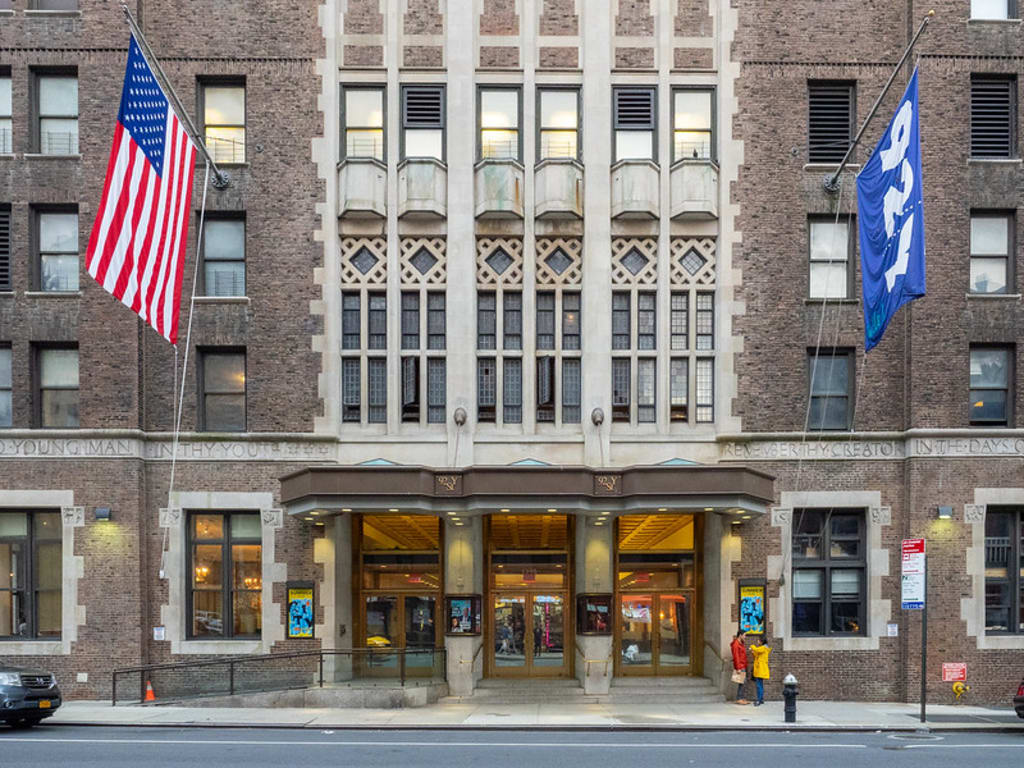Basketball and Its Jewish Origins in New York City
Basketball Began at the 92nd Street YMCA

Photo by ajay_suresh
With its high-flying, slam dunking Madison Avenue image, the NBA looks as similar to its origins as the high tech video games of today do to the primitive digital displays of yesteryear. Showtime versus short, white Jewish boys playing in settlement houses and club leagues for $5 a game. "Watch the women play in the WNBA, and that's what it was like," says Herman Romash.
His playing days began at Stewart High School and culminated by winning the Manhattan Championship in 1938. Unfortunately, Romash lost the chance for a college scholarship when he hurt his knee.
He went on to play club basketball for Union Temple at the 92nd street "Y" in the absence of any pro leagues. "It was a game," he said. "It wasn't a business.”
Settlement House Beginnings
Part of the culture sprung up around the settlement houses created for youth during the depression by Jewish affiliations. "They had camps for underprivileged kids from the east side who didn't know what a tree looked like," he says.
This included basketball leagues on Saturday nights in the city. Court side had a whole different meaning too. After basketball, it was a social event that featured a band and a Saturday night dance. "You had it made," he said, "spend an evening, and take out a girl."
The pro game we know today began to emerge in the mid 1940s when a newspaper reporter named Ned Irish began renting out the old garden on 48th street. Irish brought teams in from around the country to challenge New York City at its game. "He was the guy who put basketball on the map," said Romash.
The Old-Timers Sit Down for Coffee and Bagels
Today, 20 to 25, club league, college, and original NBA players get together every Tuesday for bagels at Shelby's in Hillsboro, Florida. Among the members for the last 20 years has been original Knicks Ossie Schectman and Sonny Hertzberg. In addition, Hank Fishman of LIU and Yeshiva University coach Red Sarachek also join in the conversation. "We throw around a lot of rah-rah and BS," he says.
But they also remember to keep it real. "These guys are great athletes," said Romash. "Much, much better than we were, and if anybody tells you we were better than them, they're just full of it."
Long lost days that Romash Chronicled in his book, A Life's Story.
Nonetheless, what he prefers to spread with his cream cheese is how they played a game that required more smarts. "They shoot the eyes out of the ball," says the summer time New Jersey resident. "And nobody passes." Back then coaches like Claire Bee devised intricate game plans and slowed the pace so you had to think a little bit, he added.
Now, It’s All about the Stars
Nobody was biggest than the game either. "Now, if you're Michael Jordan, you can foul and get away with it. Nobody is going to stop you, because without you, the league is no good," he said.
In addition, he believes traveling and palming calls have been displaced to a degree that coincides with the astronomical rise in court side seat prices. "If you bounced the ball between your legs back then, they'd have sent you home," he said.
Of course, he knows the rule changes reflect the game's need to capture the entertainment dollar. That said, Romash still likes to watch the college games since it retains some of the original purity.
But not all of the New York basketball alum at Shelby's shun today's stars. “Some love the pro game and watch all the time," he says, “while others have lost interest.”
But they can all agree on the place Red Holtzman holds in history as a bridge to their past, and the game they knew. Holtzman played for Sarachek's Workmen's Circle club team in the early 40s, and the end result showed thirty years later. "That team," said Mr. Romash of the 1970 Knicks, "you had to love, because they played basketball like we were taught how to play.”
Unfortunately, he feels, the basketball fraternity that once existed in New York City has all been lost to $215 retro-jerseys and multi-million dollar contracts. "To put it frankly, he says, "if you weren't there, you couldn't really appreciate it."
He also knows it's never going to come back.
About the Creator
Rich Monetti
I am, I write.






Comments
There are no comments for this story
Be the first to respond and start the conversation.